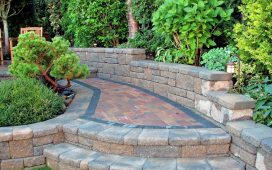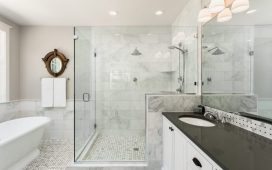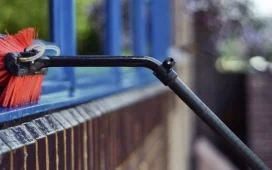When choosing ready-to-assemble (RTA) cabinets for your kitchen or bathroom, one of the key decisions you’ll face is selecting the material. Two of the most common options are MDF (medium-density fiberboard) and solid wood. Each has its own advantages and drawbacks, so understanding their properties is essential to making an informed decision. In this article, we’ll explore the differences between MDF and wood RTA cabinets to help you decide which option best suits your needs.
What Are MDF RTA Cabinets?
MDF (Medium-Density Fiberboard) is an artificially made material based on wood and derived from the wood fiber, wax and resin all pressed at high pressure to from medium density hard surface panel. It can be used in furniture, doors, and cabinets because it is cheap and can be shaped in many ways. MDF RTA means ready to assemble and get pre-cut which makes it very easy to install within a very short time. Visit this site to read more.
Advantages of MDF RTA Cabinets:
Cost-Effective: Since many manufacturers use MDF rather than solid wood, it is cheaper than solid wood, therefore can be used by financially inept homeowners. They will give you a high-end cabinetry feel but are not as expensive.
Smooth Finish: MDF also has a smooth surface and therefore is perfect for honing, especially when painting. It can be easily painted or laminated for wooden or chose any desired customized look and finish. This is especially useful if you desire the minimalist and contemporary appearance of the website.
Resistant to Warping: It does not show negative effects such as warping, cracking or expanding as is prevalent in natural wood when exposed to humid conditions. It makes it ideal for use in shower areas such as the bathroom wardrobe and even areas with a lot of steam like the kitchen.
Easy to Work With: The main advantage of MDF is that the material is easy to work with and can be easily carved and that is why RTA cabinet makers can offer diverse styles and designs. It is also lightweight which makes it quite easy for do-it-yourself enthusiasts to assemble than other similar products.
Disadvantages of MDF RTA Cabinets:
Durability Concerns: However, MDF is strong but not as strong as solid wood, this makes MDF to be used mostly for the interior designs. It can split or crack if roughly used and it does not so tighten screws as nicely as normal wood perhaps due to ageing problems.
Susceptible to Water Damage: MDF is less prone to warping than solid wood, but it should be protected from water damage in the course of use because of its porous nature. They are sensitive to moisture, and their strength may reduce if they are exposed to moisture for a long period.
Limited Repair Options: If an MDF cabinet door gets damaged, it can be more difficult to repair than solid wood. Chipped or scratched MDF may require replacement rather than simple repair.
What Are Wood RTA Cabinets?
Solid wood RTA cabinets are made from natural wood, often using species like oak, maple, or cherry. These cabinets are prized for their durability, classic appearance, and the ability to showcase natural grain patterns. Click this for more information.
Advantages of Wood RTA Cabinets:
Strength and Durability: Solid wood is more durable than MDF, making it a better long-term investment. It can withstand more wear and tear and is more resistant to dents and scratches.
Natural Beauty: The grain patterns in solid wood give it a natural beauty that MDF cannot replicate. Each wood type has its own unique characteristics, allowing homeowners to choose a cabinet material that complements their style preferences.
Refinishing Capability: Wood cabinets can be sanded down and refinished multiple times, allowing you to restore their appearance if they become worn or damaged over time. This feature significantly extends the lifespan of wood cabinets.
Disadvantages of Wood RTA Cabinets:
Higher Cost: Solid wood is typically more expensive than MDF, both in raw material cost and installation. Homeowners looking for premium, natural wood cabinets must be prepared to invest more.
Prone to Warping and Cracking: Unlike MDF, wood can expand and contract with temperature and humidity changes. In high-moisture environments like bathrooms, this can lead to warping or cracking if the wood is not properly treated.
Limited Finish Options: While wood can be stained or painted, its natural grain patterns often dictate the final look. Some homeowners may find the options for wood cabinets more limited if they’re aiming for a specific style or color.
Key Considerations: MDF vs. Wood
When choosing MDF vs Wood RTA Cabinets, here are a few important factors to consider:
Budget: If you are working within a tight budget, MDF offers a more affordable option without sacrificing style or functionality. Wood, while more expensive, offers greater long-term durability.
Location: The environment where the cabinets will be installed plays a big role. For high-humidity areas, such as bathrooms, MDF’s resistance to warping might make it the better choice. In high-traffic areas or homes with young children, solid wood’s durability can be an asset.
Maintenance: Wood requires more care and may need to be refinished over time, but it can last for decades. MDF, while easier to maintain in the short term, may need to be replaced sooner due to wear and tear.
Aesthetic Preferences: For those who appreciate the natural beauty of wood grain, solid wood cabinets are hard to beat. MDF offers more flexibility in terms of custom paint finishes, but it lacks the charm of real wood.
Conclusion
Both MDF and solid wood RTA cabinets have their pros and cons, and the right choice will depend on your specific needs and preferences. MDF is an affordable, versatile option that’s easy to work with, while solid wood offers unmatched durability and natural beauty. By considering your budget, the environment, and your design goals, you can choose the best cabinet material for your home.















